The biggest discussion the national park community has lately is how the US National Parks are becoming crowded with tourists.
Some of the most visited national parks of the system are the Great Smoky Mountains having 14 million visitors, Zion having 5 million, and Yellowstone having over 4 million visitors a year.
It's easy to imagine how a fun day in a national park could quickly become a headache because of so many people.
There is a simple solution to this problem. Rather than going to a highly popular park, check out one of the least popular US national parks.
Some amazing national parks in the system definitely do not get the love they deserve. So here is a list of the 15 least visited national parks in the US that you can explore while escaping the crowds.
| Table of Contents [Show] |
|---|
Affiliate links may be used in this post. I may receive a small commission at no extra cost to you if you use my affiliate link.
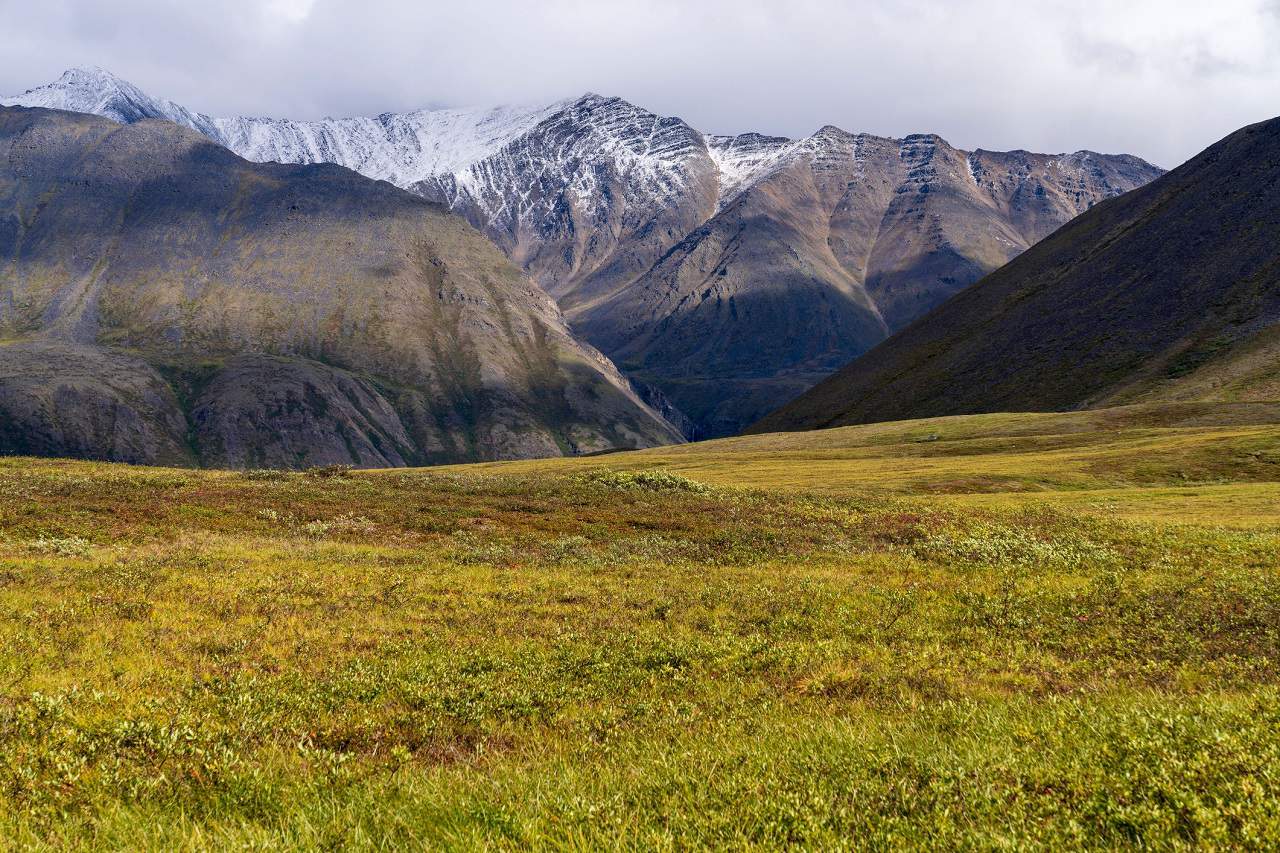
Total Visitors: 7,362
Topping the list of the least visited national parks in the US is Gates of the Arctic National Park and Preserve in Alaska.
This park receives just a mere few thousand visitors annually. To put that into perspective, America's most visited national park, the Great Smoky Mountains National Park, totaled over 14 million visitors in 2021.
Two major factors contribute to this park's low visitation rates: the park has no roads or trails, leaving visitors to fly in by plane or hike, while the other is that the entire park lies above the arctic circle.
Just because it is the least visited does NOT mean it is not worth exploring; it is the opposite. Gates of the Arctic National Park is the perfect place to experience the raw adventure that only comes from traversing the Last Frontier.
Due to its tricky terrain, the favored activities in the park include backpacking through the 8 million acres of untouched beauty, exploring the rivers via inflatable canoe, hunting, and mountain climbing.
Since there are no designated trails, people are left to wander wherever they feel called.
Since Gates of the Arctic is located above the arctic circle, there is a very small window of opportunity every year when people can visit.
The best time to visit this park is from July through mid-August. During this time, one can expect 24-hour sunlight and reasonable temperatures.
Any time outside these guidelines, one can optimistically expect the rainy season while the worst possible scenario is snow and well below-freezing temperatures.
Also Read: Top Tourist Attractions in Alaska
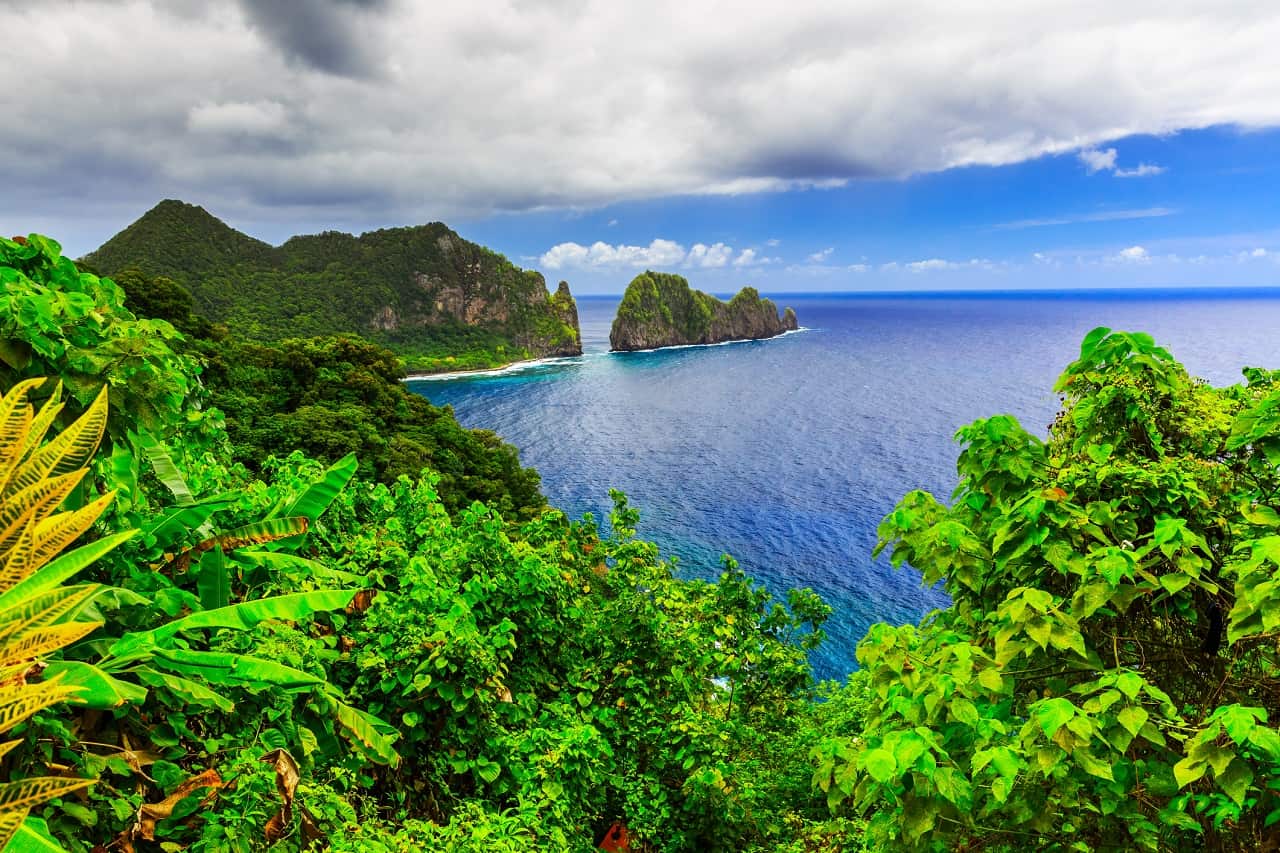
Total Visitors: 8,495
Time and again, a national park made up of white sand, and warm weather is underappreciated when people should be gushing over it.
The National Park of American Samoa is in the United States territory of American Samoa, spread across three different volcanic islands.
The park boasts its magnificent land and oceanic features. Its diverse ecosystem encompasses tropical rainforests, volcanic cliffs, and vibrant coral reefs.
This South Pacific paradise has around 10,000 visitors yearly; these low numbers are because Samoa is nearly 5000 miles from the contiguous United States.
There are also not the expected national park facilities usually located throughout other national parks.
Like the rest of the National Park System, the National Park of American Samoa has its own national park rangers and a visitor center, but beyond that, the rest of the park is unmaintained.
Due to its remoteness, one can fully enjoy one of the least crowded US National Parks in relative peace. Popular trails include the Pola Island Trail to a rocky beach or go on an adventure on the Tuafanua Trail or Mount 'Alava Trail.
Its claim to fame is the only US National Park located in the southern hemisphere; better yet, it is right near the equator.
This means that people can enjoy the park at any time of the year. Now saying that there are better times to go than others.
The South Pacific experiences a rainy season from October to May, which makes the best time to explore the national park from June to September.
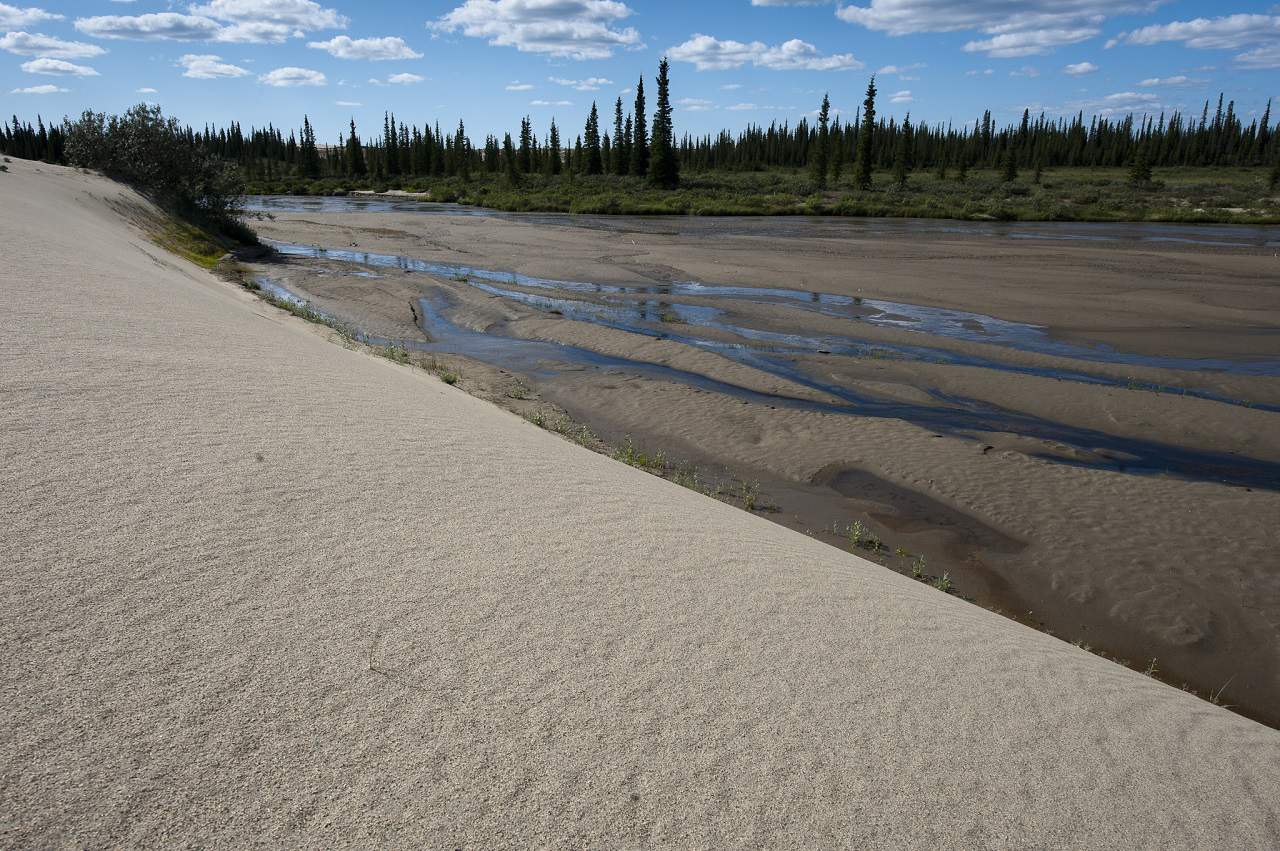
Total Visitors: 11,540
Kobuk Valley National Park is 1.75 million acres encompassing numerous anomalies of nature. In this protected Alaskan wilderness, one can find the spot where sand meets the tundra.
The Great Kobuk Sand Dunes are the Arctic's largest active sand dunes that can reach 100 feet tall. Another exciting part of the park is an archaeological site called Onion Portage that supplies evidence of cultures that date to 8,000 years ago.
Possibly, Kobuk Valley National Park's best event is the migration of the Western Arctic caribou herd. Twice a year, a herd of a few hundred thousand caribou crosses the Kobuk River and journeys 600 miles from its calving grounds to its winter grounds.
This herd is one of the largest in Alaska, and Kobuk Valley National Park is the location for one of the last great animal migrations left in the world.
It is evident that Kobuk Valley is one of the most special national parks in America, yet the park only receives around 10,000 visitors annually.
This is actually just an informal guess made by the National Park Service because the park has no proper entrance gates.
Also, the entire park has no roads, trails, rangers, or facilities. Average Alaskan terrain is already difficult to navigate, but with these conditions, one must be motivated to traverse this impassible land.
Located 30 miles north of the Arctic Circle, Kobuk Valley National Park receives volatile weather. For the most reasonable weather conditions, visit during June and July to have the full effects of summer. Yet, the caribou migration would be in full force in early September.
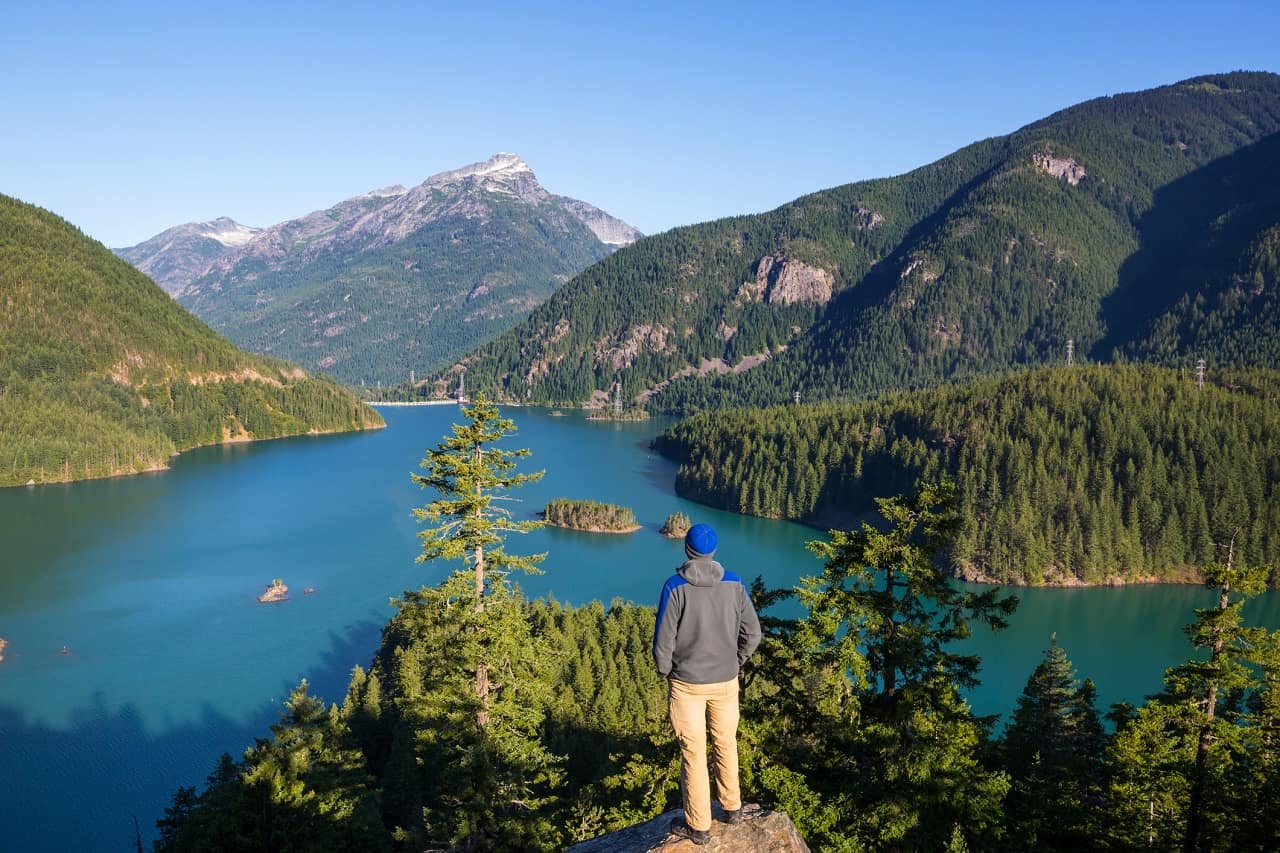
Total Visitors: 17,855
North Cascades National Park in Washington State is a crowning jewel of the Pacific Northwest.
Just a couple of hours away from Seattle, one would think that the dramatic mountain landscape of North Cascades would draw in crowds.
Yet the national park is number four among America's least visited National Parks. North Cascades National Park is notorious for having inaccessible roads.
Because of the topography of the park, there are very few roads that run through the park. These handful of routes are often impassable due to rockslides and snowy conditions.
Though the way there may be challenging to travel, it could not be more rewarding. In the North Cascades, places like Diablo Lake overlook are where one can view the popular glacial blue lake iconic to the park.
There are also incredible hiking trails that allow opportunities to be immersed in the alpine scenery.
The prominent trails of the national park include the 7.4-mile hike on Cascade Pass or see a remote lake encircled by rocky mountains with a 10.4-mile hike to Thornton Lake. One
The best time to visit North Cascades National Park is mid-July through September. Snow generally appears at the park in October and does not melt until April.
As the snow melts, it causes more landslides, making the roads closed until around June. This short season that the park is open is another reason why the visitation numbers are so low.
Also Read: Most Beautiful National Parks in the USA
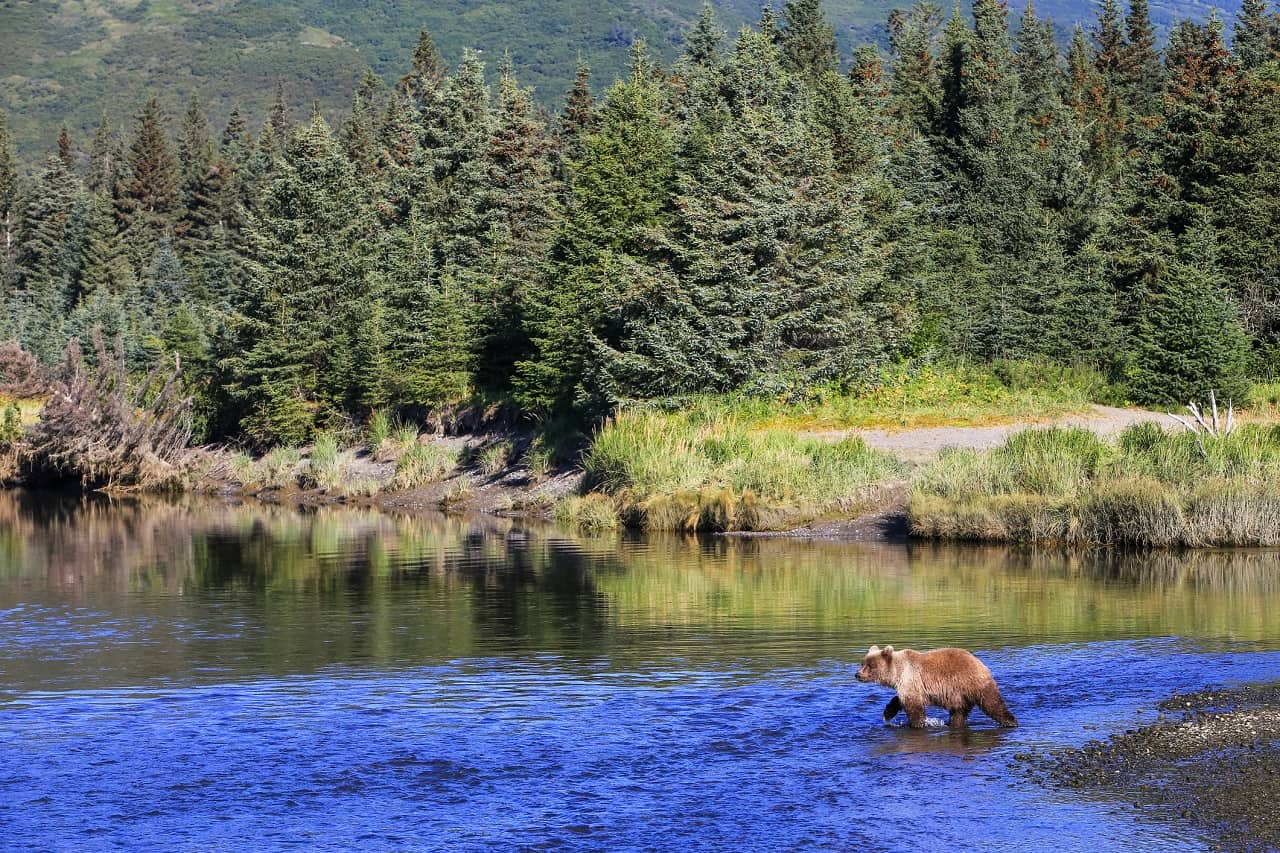
Total Visitors: 18,278
Next on the list of secluded national parks in Alaska is Lake Clark National Park. The national park is split into two equally beautiful parts.
The interior has towering mountains that are iconic in Alaska and the deep blue oceans of the coast. Lake Clark is often referred to as
"The Essence of Alaska" because it takes many of the idolized features of Alaska and wraps them into one national park.
The downfall of this magnificent park is that, like many other Alaskan National Parks, Lake Clark is so remote that it requires a plane to access it.
Visitors must complete a one-hour flight from Alaska's capital, Anchorage, to see the park because no roads run in and out.
Due to Lake Clark's isolation, one can witness the untouched wilderness of Alaska.
Some of the best things to do at the park include fishing the sockeye population that inhabits the park, hiking and backpacking, though there are few designated trails, and the highly popular bear viewing.
A pro tip if you are planning to fish in this underrated national park the season is between May and October.
The most idyllic time to explore Lake Clark National Park is June to August. During the early summer, one can expect sun and warm weather, but it is generally known that August provides the best experience. The berries are in full bloom throughout August, and the fish are abundant.
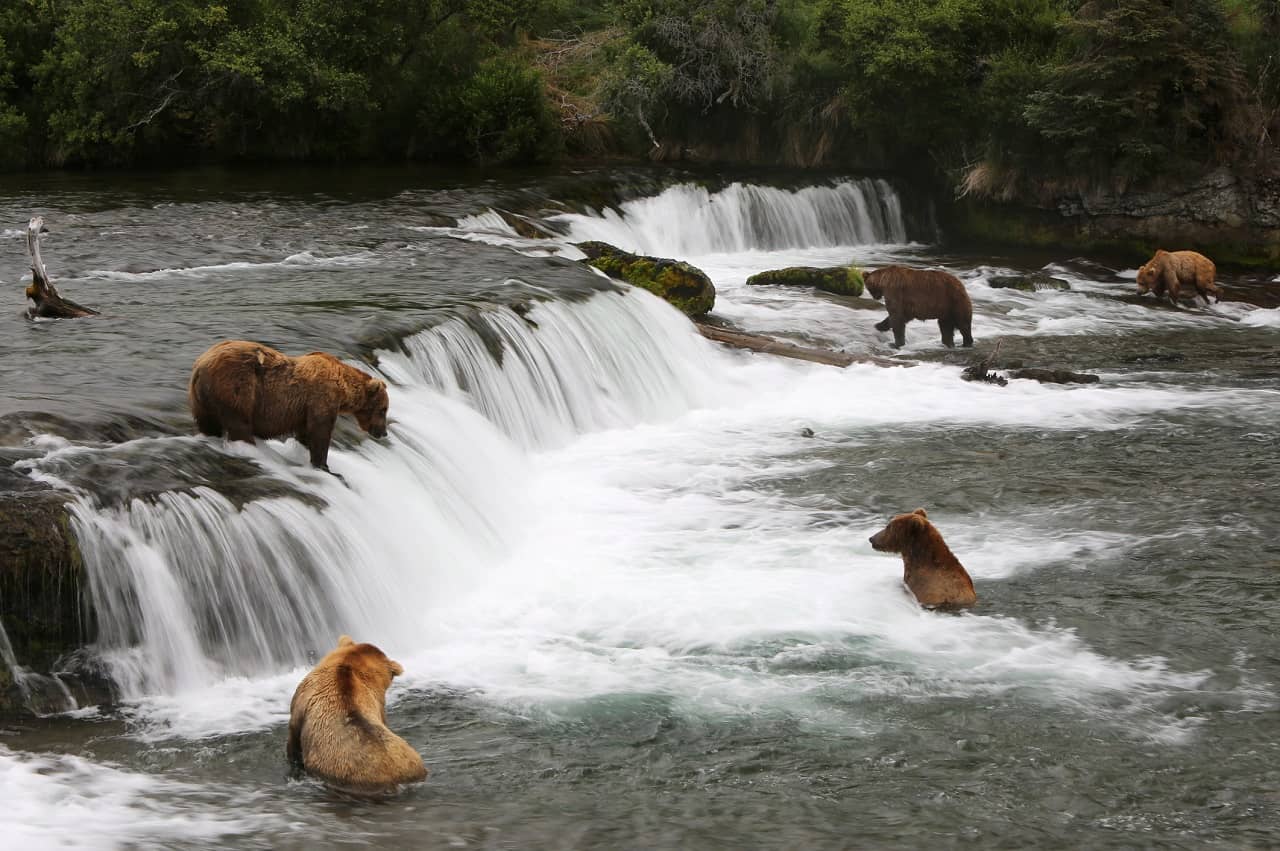
Total Visitors: 24,764
Katmai National Park and Preserve in Alaska is one of America's most popular destinations for wildlife viewing.
This National Park is not just known for wildlife; Katmai has one of the highest recorded concentrations of bears ever recorded.
Over 2,000 brown bears reside in Katmai National Park. Brooks Camp is renowned in the national park world as an iconic spot for brown bear viewing.
Every summer during the salmon run, bears crowd the brooks river in a magnificent display of wild Alaskan beauty.
Brooks Camp is the view platform next to Brooks falls, and it is the best place to view the spectacle, making it an extremely popular park area. Another place that draws visitors to the national park is the Valley of Ten Thousand Smokes.
In 1912 the largest volcanic eruption of the 20th century occurred in what is now Katmai National Park. Lava and ash spewed that has since cooled and became the otherworldly Valley of Ten Thousand Smokes.
Now how exactly did Katmai National Park and Preserve land itself on the list of the least visited national parks? Like most other Alaskan National Parks, Katmai has no road connections, leaving visitors only to fly in from Anchorage to experience this incredible wildlife haven.
The most popular time to experience Katmai National Park and Preserve is when the salmon run is full swing. The best months are between July and September to see the bears in their iconic place along Brooks River.
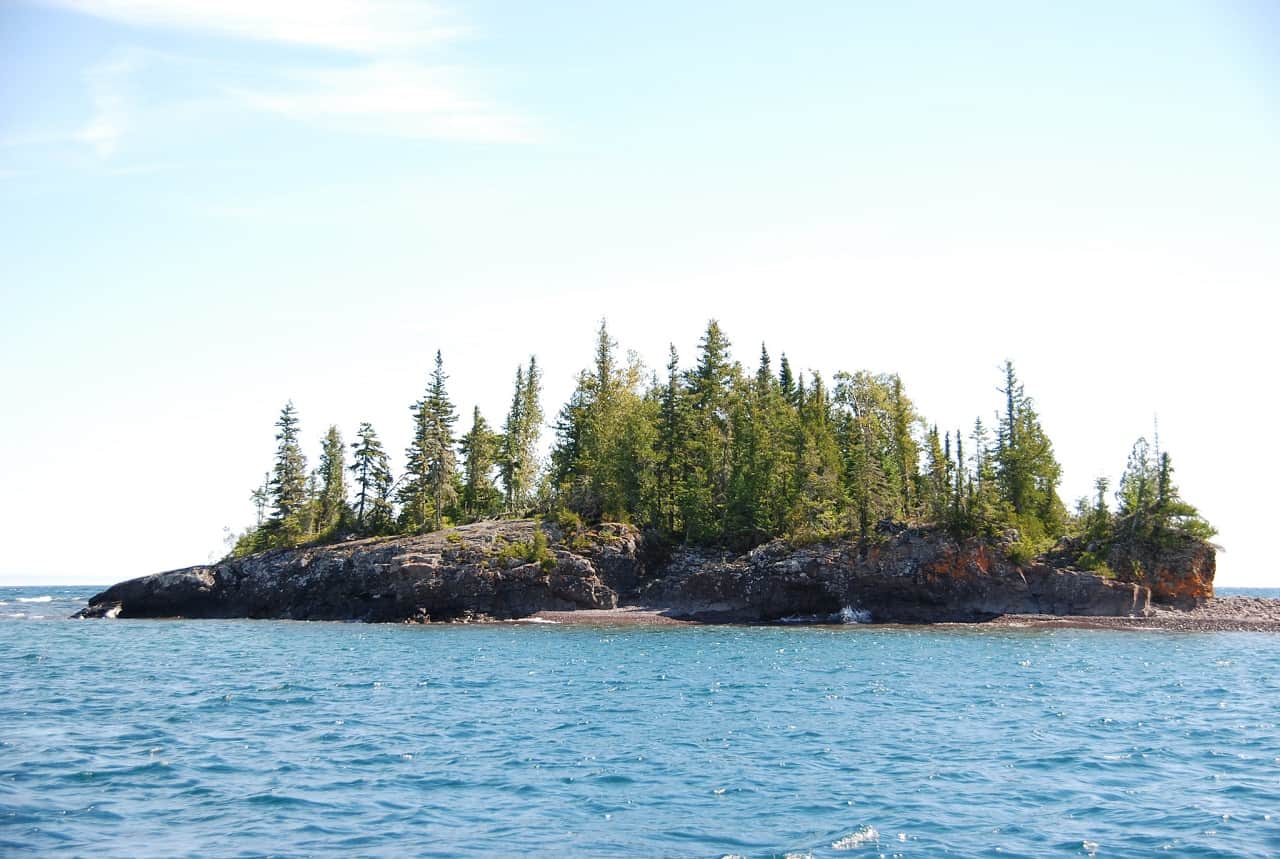
Total Visitors: 25,844
In the middle of the frostbitten waters of Michigan's Lake Superior is the remote island wilderness of Isle Royale National Park.
This national park is so isolated that visitors can only reach it by ferry or seaplane. Since this park is difficult to reach, the island remains unspoiled by modern conveniences.
Because of these occurrences, Isle Royale remains the 45-mile-long island of untouched forests, crystal blue lake waters, and untamed wolves.
The most popular activities to do in the national park are fishing, kayaking, and hiking. The highest-rated trail is The Greenstone Ridge Trail which travels the 40-mile stretch of the island.
A similar but less crowded hike would be Feldtman Lake Loop Trail. The park is also known for being one of the best places to kayak in Michigan.
Do not worry about lugging around a kayak; there are rentals on the island. Visitors to the island are expected to pack in and out, carrying everything they need for their stay.
This is because adventurers will find very few amenities throughout the island. Isle Royale National Park may not be for everyone, but it is certainly worth it for the intrepid explorers willing to take on the challenge.
Another reason Isle Royale is consistently one of the least visited national parks in the US is that the national park is only open from mid-April through October. This is due to the extreme weather the island experiences because of its geographic location on the lake.
Also Read: Top Tourist Attractions in Michigan
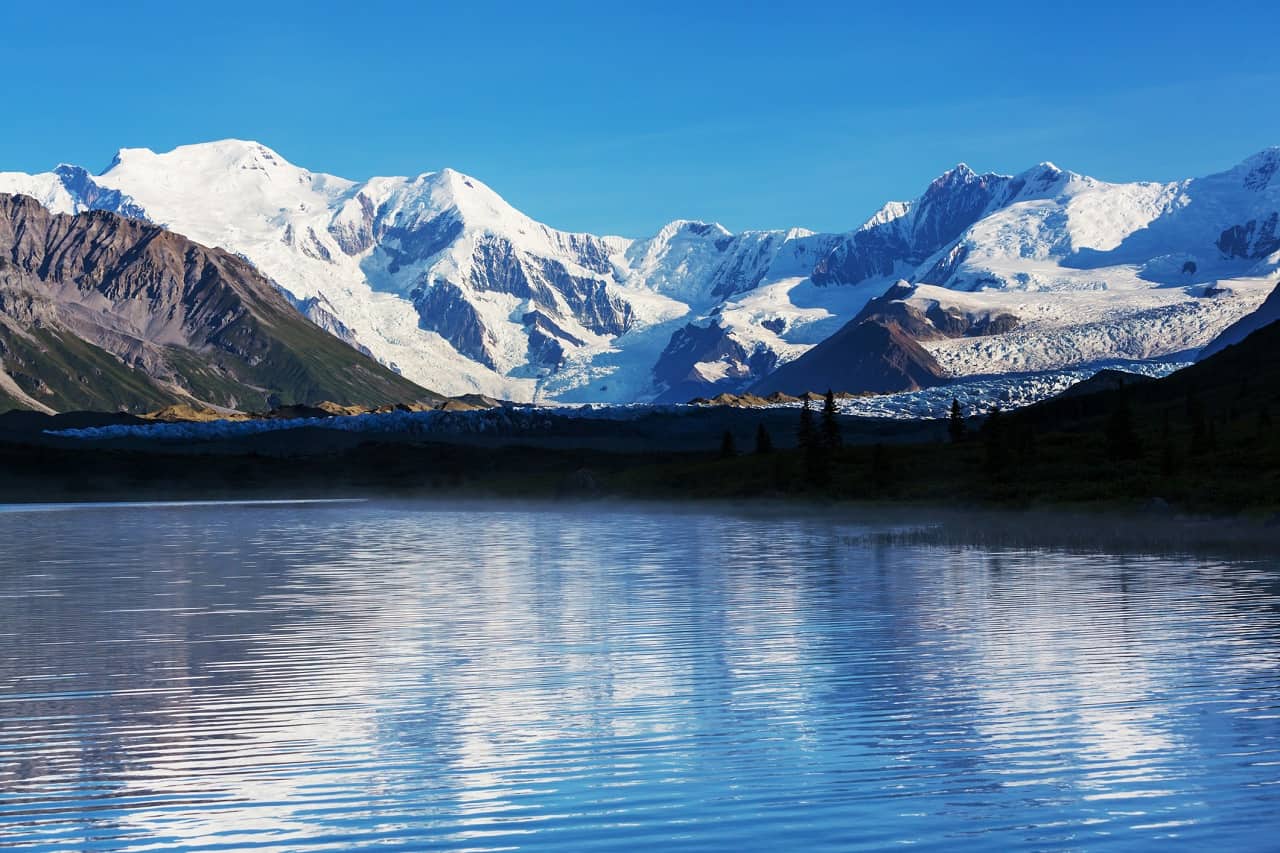
Total Visitors: 50,189
Imagine a road lined with bright green pine trees leading toward a towering white-capped mountain range in the distance, and that will be the iconic image of Wrangell-St. Elias National Park in Alaska.
Larger than Switzerland, Wrangell-St. Elias National Park is 13.2 million acres of the wild Alaskan landscape.
This national park spans the greatest concentration of glaciers in North America, four different mountain ranges, and is also a Unesco World Heritage Site.
Although this national park has a larger land mass than numerous European countries, it has a mere 100 miles of road running through it.
Wrangell-St. Elias splits the 100 miles between two roads which are McCarthy Road and Nabesna Road. This means most of the park is only accessible by foot or plane.
Initially, this may seem inconvenient, but in reality, one of the best ways to see the park is by plane. Because of how immense the park is, a plane offers a different perspective by experiencing the grand mountains from the sky.
Another popular activity in the park is to drive the Mccarthy Road. This unpaved road used to be an old railroad line that has been covered, and now cars can access it.
There are numerous sights to see along the 60-mile stretch, including Kuskulana River Canyon and Bridge at mile 17 and Kennicott River and Glacier at mile 58.
Since Wrangell-St. Elias National Park is located in southeastern Alaska; the established time of year to visit the park would be from mid-May through mid-September. The interior of Alaska has an early winter, and by the end of September, many amenities are closed for the season.
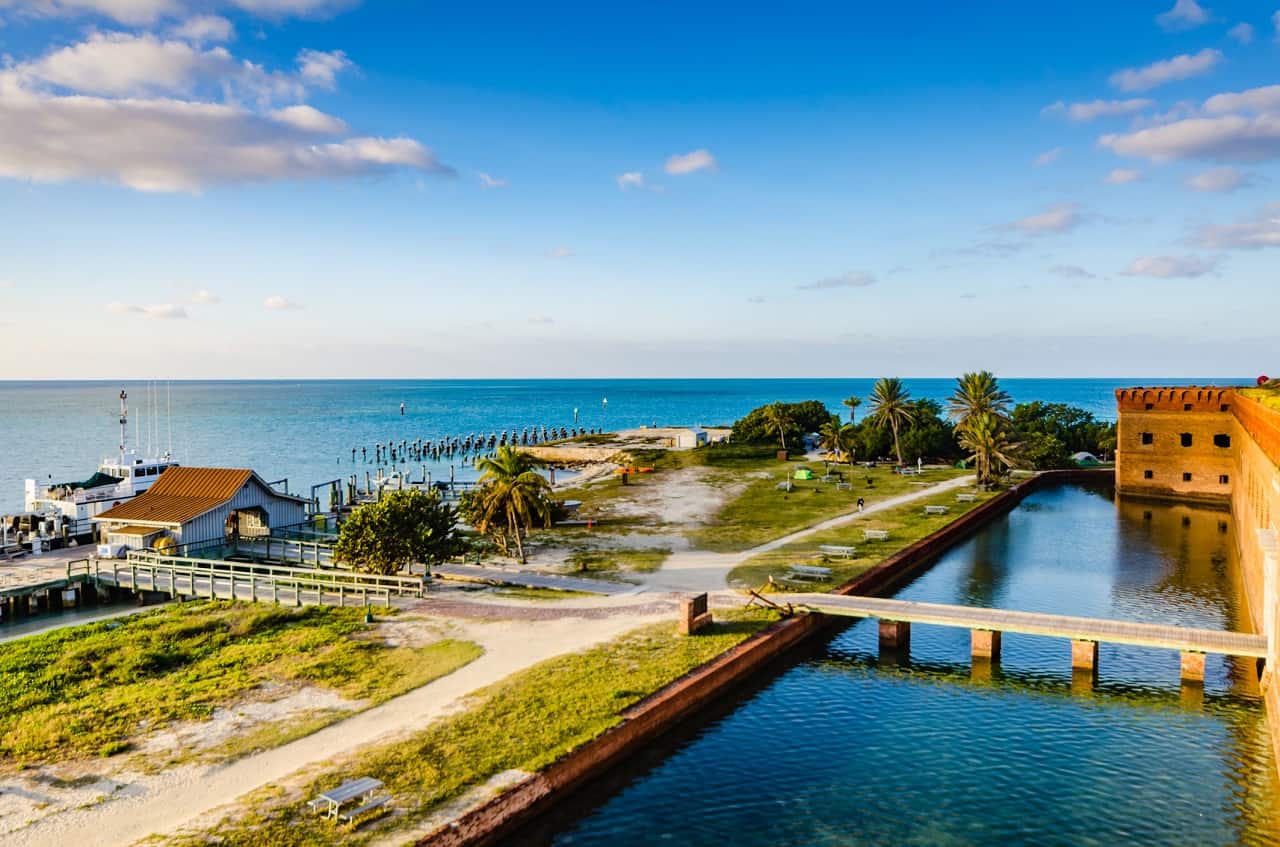
Total Visitors: 83,817
Less than 100 miles off the coast of Key West, located on the furthest Florida Key, is one of the least popular US national parks, Dry Tortugas National Park.
Dry Tortugas is like most other Keys with its white sand beaches dotted with beachgoers and sailboats that glide across the clear blue water.
The difference lies in the structure that was built on the pristine paradise. Dry Tortugas National Park protects Fort Jefferson and the seven Dry Tortugas Islands.
The national park's most well-known activity is exploring the brick fort to learn about its vast history. Fort Jefferson's initial purpose when it was built in 1846 was to protect the entrance to the Gulf of Mexico.
Although construction was never completed, the fort has had many purposes, like a coating station and, most infamously, a prison.
Since Dry Tortugas National Park is one of the more isolated Florida Keys, the islands surrounding coral reefs are famous for being untouched by over-tourism.
Snorkeling is an immersive experience at the national park because the waters are filled with colorful tropical fish, nurse sharks, and sea turtles.
Although most of the Florida Keys are connected by The Overseas Highway, this remote island can only be accessed by seaplane, boat, or ferry. With varying expenses for each, Dry Tortugas National Park is one of the more expensive parks to visit.
February through April is considered the best time to visit Dry Tortugas, National Park. Conditions are pleasant because of calm seas, warm Florida weather, little chance of rain, and thinner crowds.
Also Read: Top Tourist Attractions in Florida and The Best East Coast National Parks
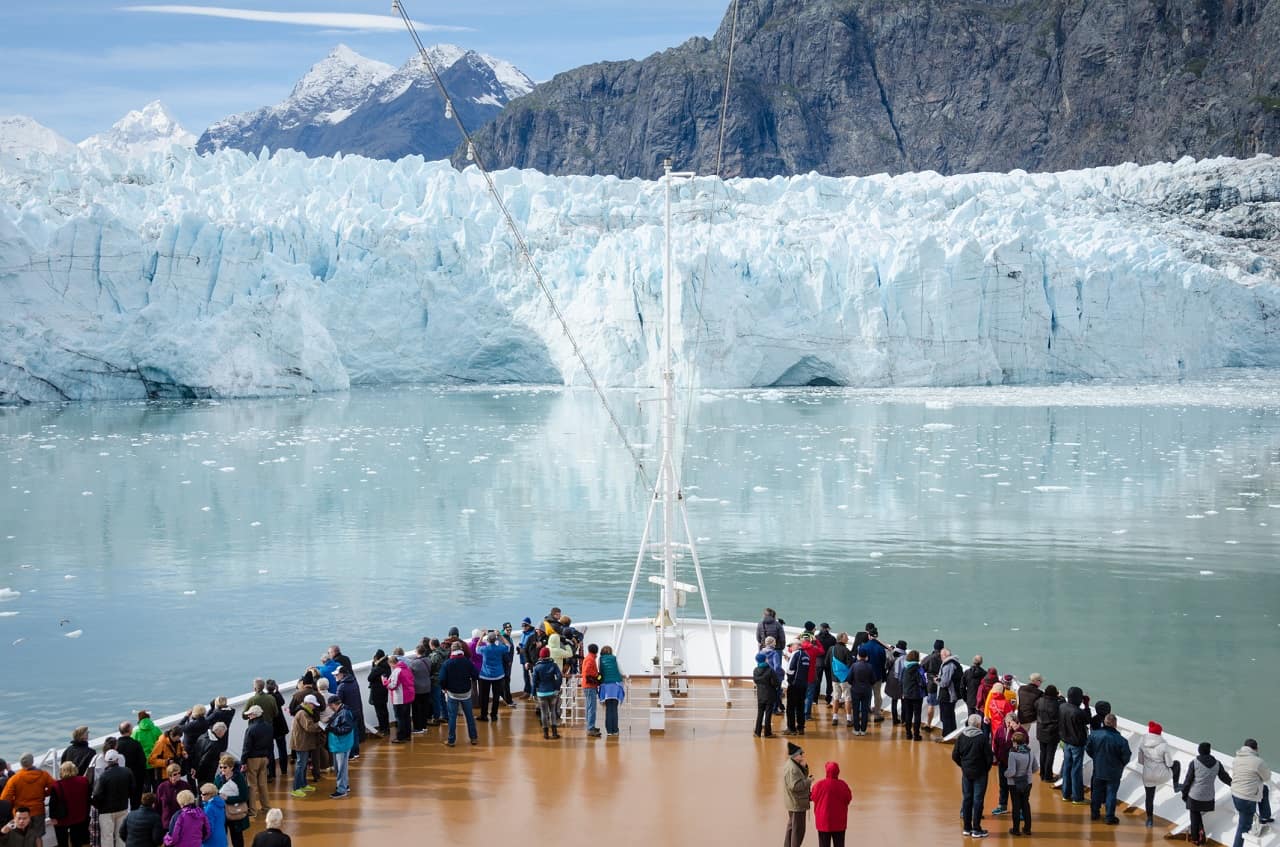
Total Visitors: 89,768
The glaciated fjords in Glacier Bay National Park and Preserve are a magnificent symbol of the vast and varied Alaskan landscapes.
Glacier Bay National Park is not only a UNESCO World Heritage Site but also a UNESCO Biosphere Reserve.
Scientists who have studied the national park refer to it as a "living laboratory" because of its glacier retreat, plant succession, and animal behavior.
Although Glacier Bay National Park & Preserve is the most visited national park in Alaska, the park is routinely one of the least visited National Parks in America.
Visitors must arrive by boat on a plane to the isolated environment. The most common form of transportation into the park is the Alaskan cruises that often make the national park a stop.
Often stop at the national park, yet most passengers never step into the park. Another way to access the park is by plane or ferry from the nearby Alaskan capital city, Juneau.
There are many unique activities that allow visitors to explore the landscape. Kayaking is a popular activity in the various waters of the park and can be rented locally or brought by guided tours.
Numerous hikes traverse the area of the park, like Wolf Creek, Muir Inlet, and White Thunder Ridge. Wolf Creek is a favored trail because it leads to a forest buried by a glacier 7000 years ago.
The best time of year to visit Glacier Bay National Park is from late May to early June. This is when the park is least crowded and not as wet or cold.
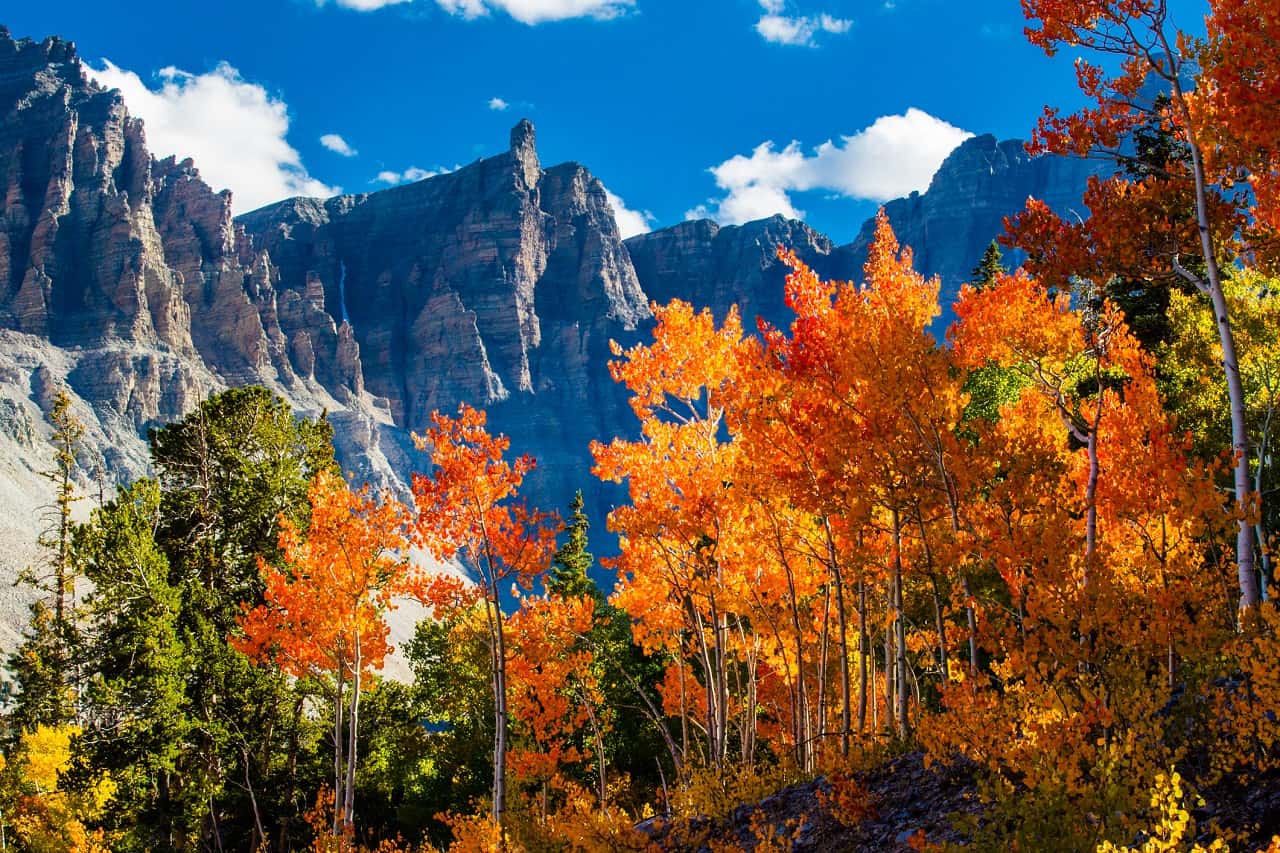
Total Visitors: 144,875
Great Basin National Park in Nevada has a little bit of everything. This national park showcases beautiful mountain scenery, a cave system, incredible stargazing, glaciers, and the world's oldest living trees.
So, how did Great Basin National Park end up on the list of least popular US national parks? The answer is rather simple.
It is in the middle of nowhere, Nevada. No matter which direction you come from, the journey to the park is instead a long one. On the way to Great Basin National Park, you may even drive along The Loneliest Road in America.
Once you reach the park, you should expect few surrounding amenities and no cell service. If you are a true adventurer, this should not deter you rather should motivate you to visit this remote national park.
There are many exciting things to do once you have reached Great Basin. The area is considered a dark park, so head out for a night adventure to experience the night sky.
Take a tour through Lehman Cave, where a national park ranger will explain all the exciting features of the cave. Visitors choose between a 60-minute Lodge Room Tour or the Grand Palace Tour, which lasts around 90 minutes.
An irrefutable must-do while at the park is to see the oldest living organism on the planet. The Great Basin bristlecone pines live upwards of 5000 years, and there are trails like the bristlecone trail where one can see them.
It is generally known by locals of the region that the best time to see Great Basin National Park is in the fall. Visitors during this time can expect fewer crowds, beautiful fall leaves, and reasonable temperatures.
Also Read: Top Tourist Attractions in Nevada
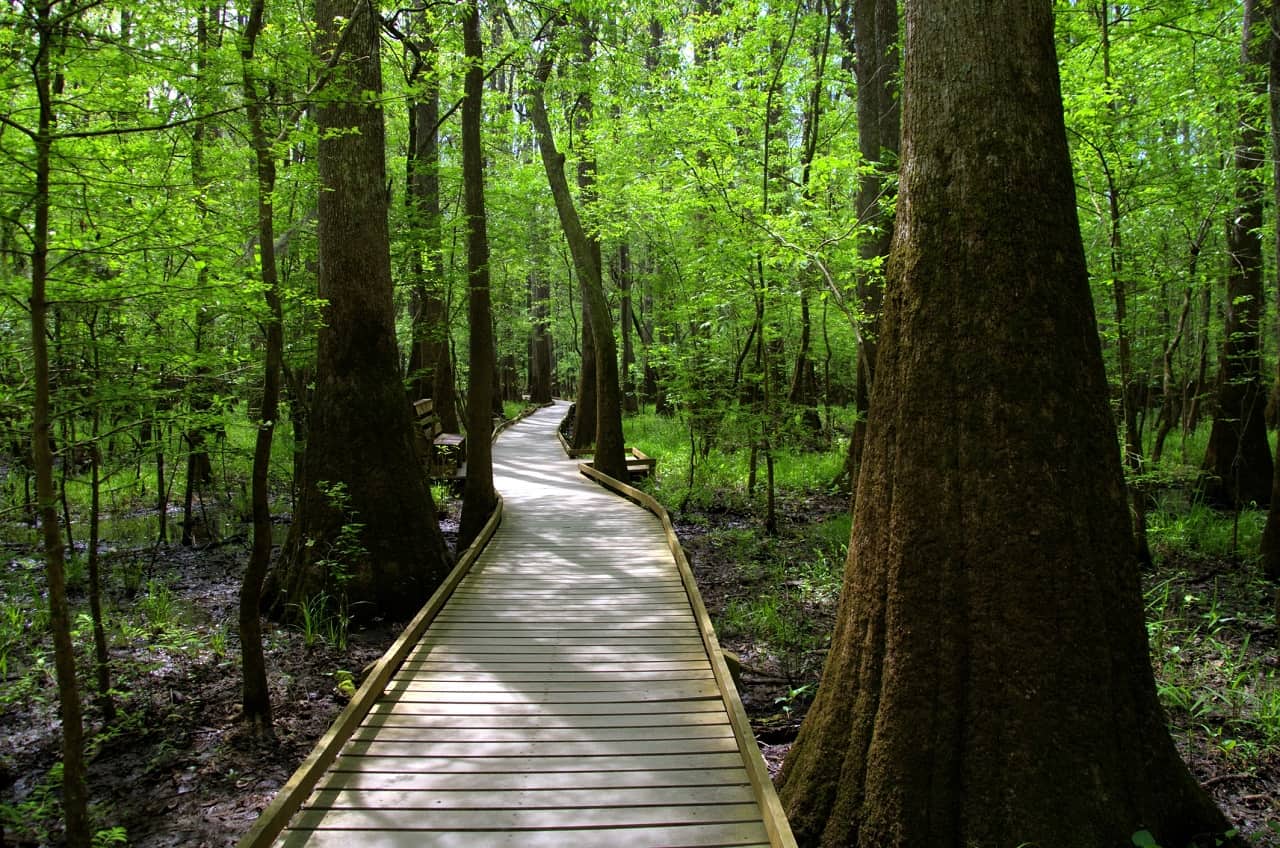
Total Visitors: 215,181
The only national park in South Carolina is Congaree National Park. Nearby the state capital of Columbia, Congaree is a jewel to the Carolinas.
Congaree National Park protects a unique biosphere and preserves the largest tract of old-growth lowland hardwood forest in the United States.
Visitors should include the Boardwalk Trail and kayaking on their trip to Congaree National Park. The Boardwalk Trail is an easy and highly accessible walk that lets hikers experience the Congaree wilderness in its true majesty.
A reason as to why Congaree is one of the least visited national parks is that flooding and mosquitoes are a big problem in the park. Since the Congaree river flows right through the national park, it often becomes a floodplain.
The best time of year to experience Congaree National Park is from March to May because of warm temperatures and statistically low rainfall.
Also Read: Top Tourist Attractions in South Carolina
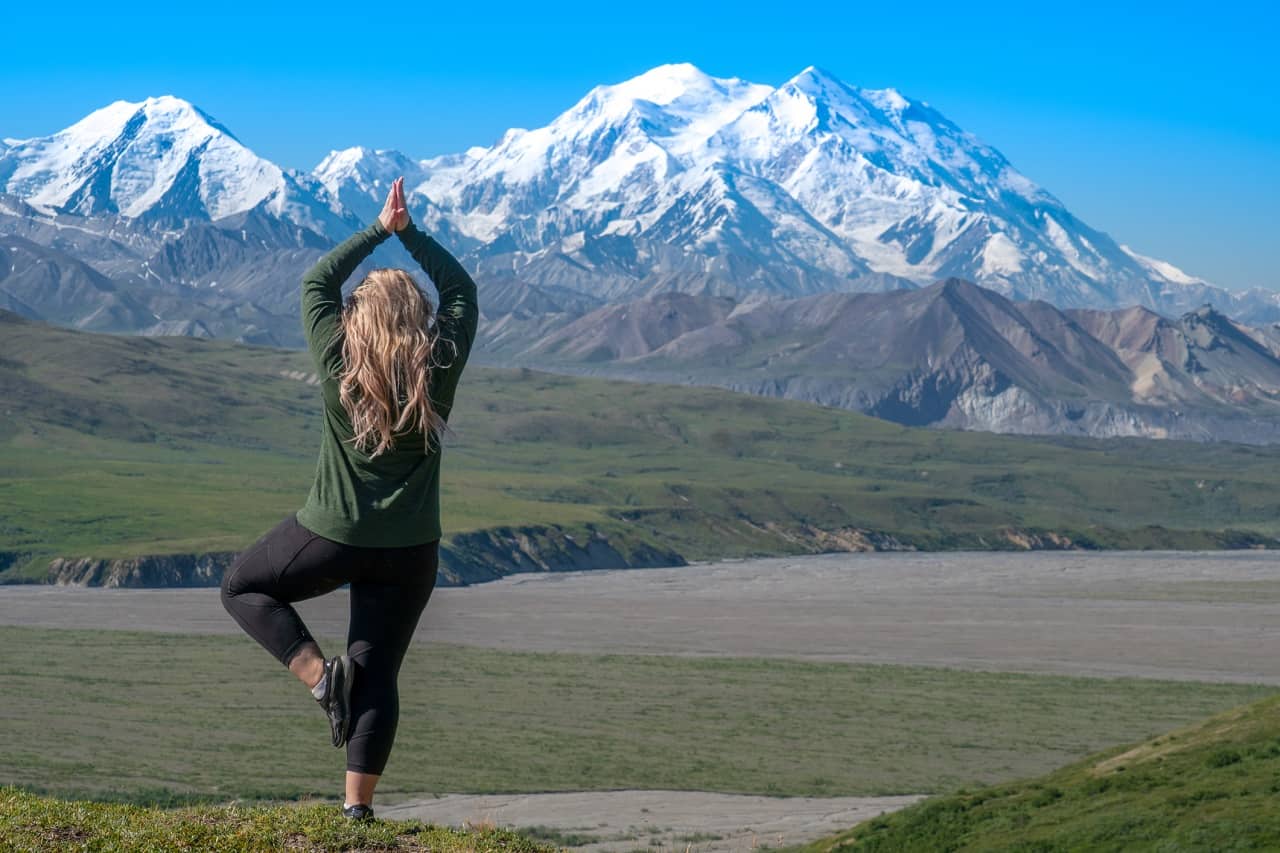
Total Visitors: 229,521
Denali National Park and Preserve, formerly known as Mount McKinley National Park, was the first national park to be established to protect wildlife.
Back in 1917, the creation of the national park was meant to help the problem of overhunting the Dall sheep in the area.
Located in the Alaskan interior, Denali is the tallest mountain in North America, standing at 20,320 feet. Denali may be a rather large mountain it is notoriously known to be hard to see.
Because of its location, Denali experiences clouds and precipitation, which then cover the mountain. Visitors of the park should expect the mountain not to be seen for days at a time.
A few challenges posed by visiting Denali National Park are that it only has one road on which private vehicles can only drive 15 miles, and there are very few hiking trails.
These factors contribute to Denali's low visitation rates and make experiencing the park rather difficult.
With that being stated, some of the best things to do in the park include a tour on a transit bus, wildlife viewing, off-trail hiking, visiting the sled dog kennels, and seeing the Eielson Visitor Center.
Although Denali National Park and Preserve are open year-round, most people tend to come between mid-June and early September. Summer is the peak season for wildlife activity and sunlight, and it has the relatively most enjoyable weather.
Also Read: Best Things To Do In Denali National Park
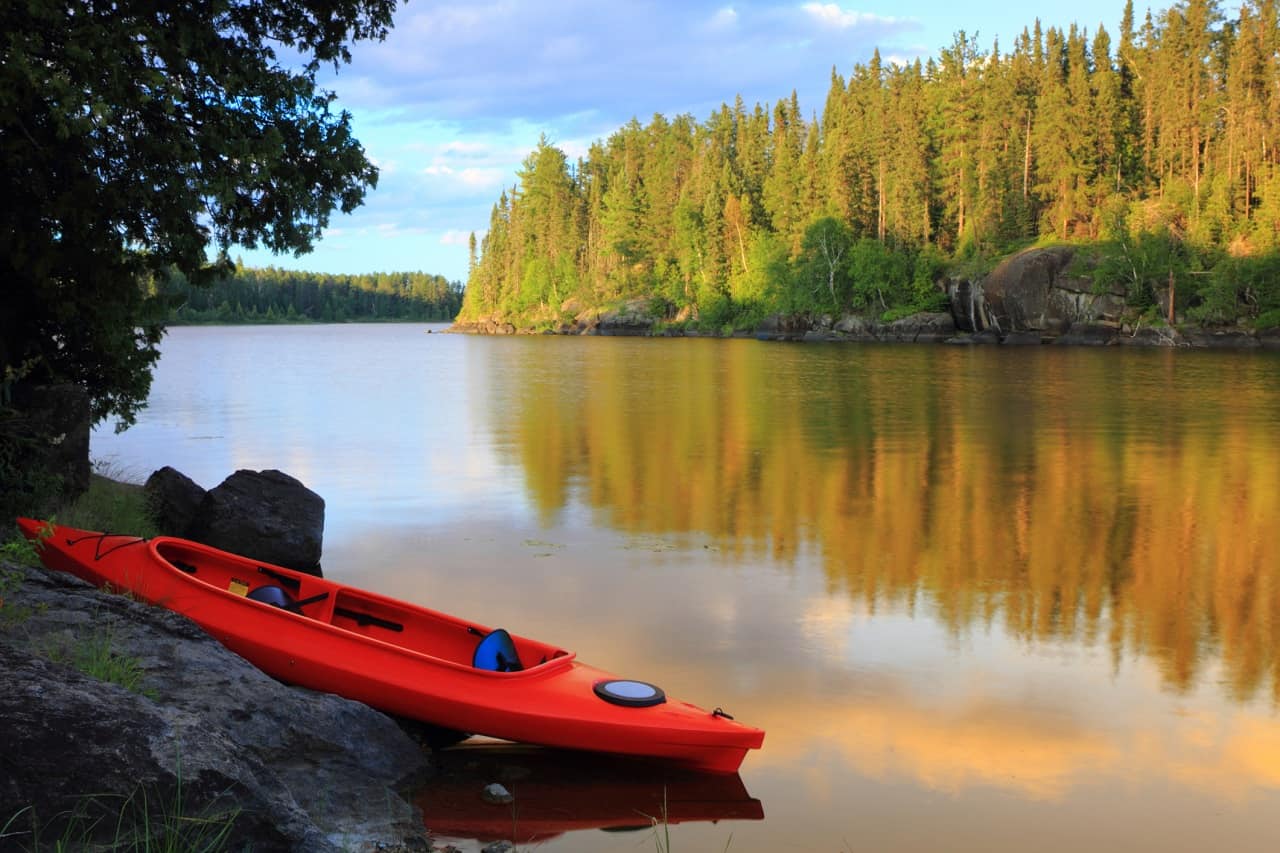
Total Visitors: 243,042
Voyageurs National Park is where Minnesota and Canada meet in an area of lush forests, enormous waterways, and abundant wildlife.
Nature's water park, also known as Voyageurs, is a water-based park because one-third of the area is water. Voyageurs National Park encompasses four large lakes along with 26 smaller lakes.
The best way to experience the park is by kayaking or boating around.
One of the must-sees in the park is to see the northern lights. Voyageurs is away from the hustle and bustle, making it the perfect dark park to see the magical colors of the northern lights.
Another place to add to the list is the Ellsworth Rock Gardens which offers a unique perspective on creativity through the unique stacking of rocks.
Do not forget the Grassy Bay Cliffs on the trip. These cliffs are another sight to behold, with 125 feet of sheer granite cliffs crowned by a pristine forest.
The national park does not come without its challenges. It is not a popular park because Voyageurs has no roads, trails, cell service, or established campsites.
Fall is widely regarded as the best time to visit the Voyageurs National Park. Although temperatures might make the park a little cooler, the fall leaf peeping and northern lights make it more than worth it.
Also Read: Top Tourist Attractions in Minnesota and Beautiful Lakes in Minnesota
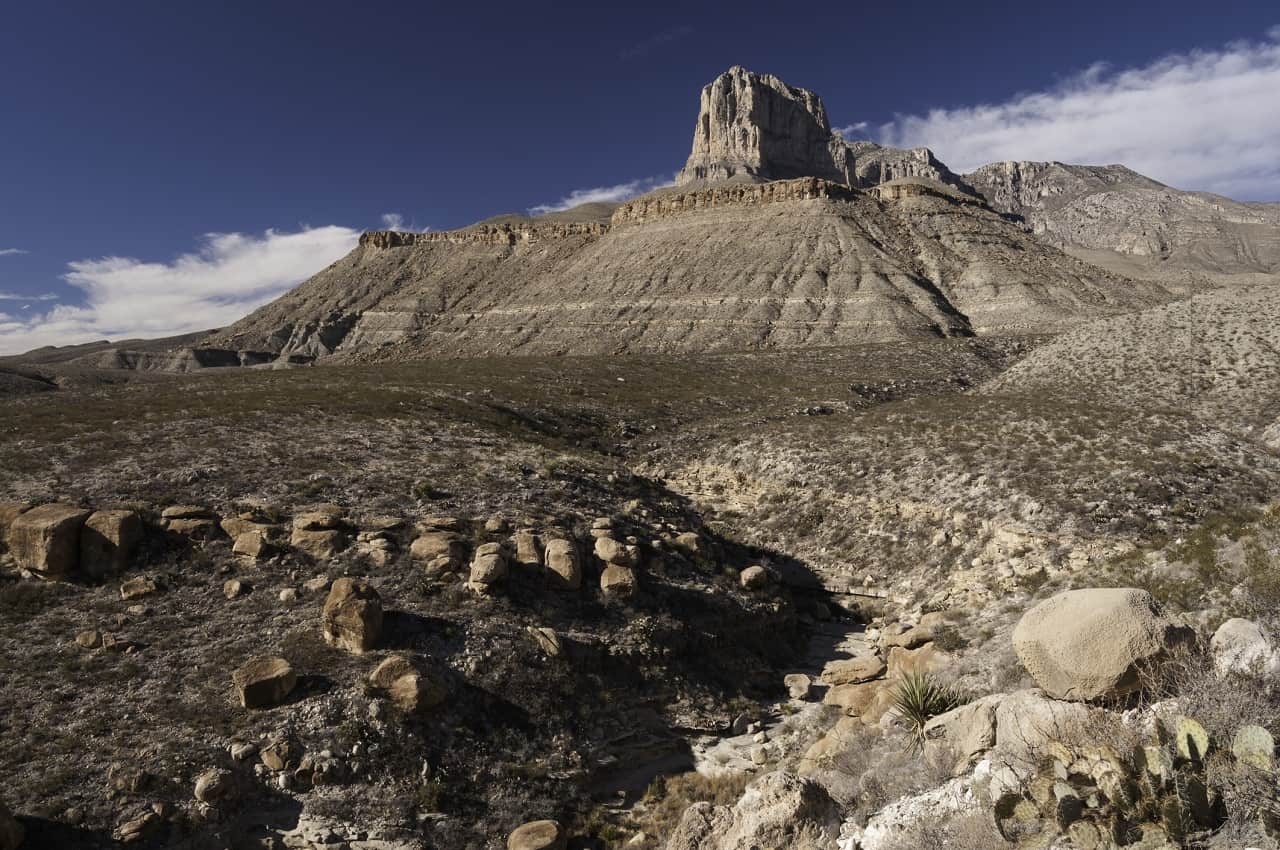
Total Visitors: 243,291
Out in the deserts of West Texas, there is a national park that often gets overlooked because of its location. Guadalupe Mountains National Park protects the most extensive Permian fossil reef in the world.
Adorning the wild Texas brush landscape is part of the Guadalupe Mountains that run through the national park. Numerous trails run right up the mountains, but by far, the most popular is the hike to Guadalupe Peak.
At 8751 feet, Guadalupe Peak is the highest point in Texas. Another fantastic hike at the national park is the Devil's Hall Trail. This hike is more of an adventurous rock scramble to a unique location.
Did you know that there are two El Capitans in the US National Park system? That is right, Yosemite National Park and Guadalupe National Park have a peak named El Capitan.
A reason why Guadalupe is not nearly as famous as Yosemite may be that it is a far drive from any direction.
Guadalupe Mountains National Park may be open all year long, but it is best to visit in the spring or fall. Visitors can expect milder temperatures which save most from the humid Texas heat.
Also Read: Top Tourist Attractions in Texas
Take advantage of the parks on this list of the Least Visited National Parks in America. These parks offer sanctuary and possibly solitude away from the overcrowding of other national parks. Some of the national parks' remoteness allows for an experience visitors of top-rated national parks could never dream of having. Remember, just because a national park is not visited very often does not mean it does not deserve to be.